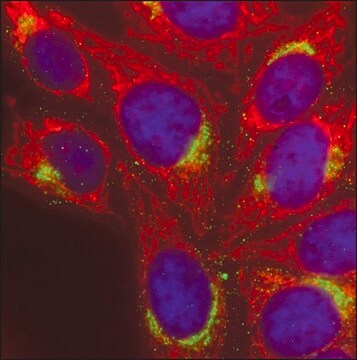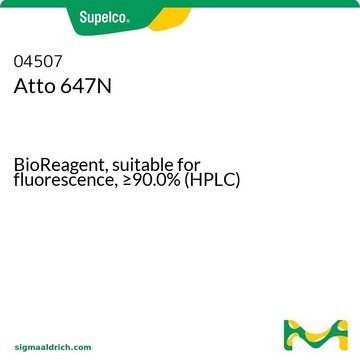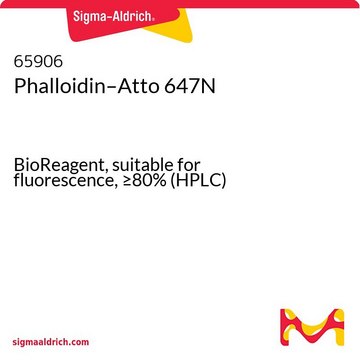43394
Anti-Maus-IgG−Atto 550
1 mg/mL protein
Synonym(e):
Atto 550-Anti-Maus-IgG
About This Item
Empfohlene Produkte
Konjugat
Atto 550 conjugate
Qualitätsniveau
Antikörper-Produkttyp
secondary antibodies
Klon
polyclonal
Form
liquid
Enthält
50% glycerol as stabilizer
Speziesreaktivität
mouse
Konzentration
1 mg/mL protein
Methode(n)
immunofluorescence: suitable
protein array: 2.8 μg/mL
Fluoreszenz
λex 550 nm; λem 576 nm in PBS
Lagertemp.
−20°C
Posttranslationale Modifikation Target
unmodified
Physikalische Form
Hinweis zur Analyse
Rechtliche Hinweise
Haftungsausschluss
Sie haben nicht das passende Produkt gefunden?
Probieren Sie unser Produkt-Auswahlhilfe. aus.
Signalwort
Warning
H-Sätze
P-Sätze
Gefahreneinstufungen
Eye Irrit. 2
Lagerklassenschlüssel
10 - Combustible liquids
WGK
WGK 3
Flammpunkt (°F)
Not applicable
Flammpunkt (°C)
Not applicable
Persönliche Schutzausrüstung
Eyeshields, Gloves
Analysenzertifikate (COA)
Suchen Sie nach Analysenzertifikate (COA), indem Sie die Lot-/Chargennummer des Produkts eingeben. Lot- und Chargennummern sind auf dem Produktetikett hinter den Wörtern ‘Lot’ oder ‘Batch’ (Lot oder Charge) zu finden.
Besitzen Sie dieses Produkt bereits?
In der Dokumentenbibliothek finden Sie die Dokumentation zu den Produkten, die Sie kürzlich erworben haben.
Kunden haben sich ebenfalls angesehen
Artikel
Immunoblotting (Western blot transfer) is a common technique in modern proteomics research.
Unser Team von Wissenschaftlern verfügt über Erfahrung in allen Forschungsbereichen einschließlich Life Science, Materialwissenschaften, chemischer Synthese, Chromatographie, Analytik und vielen mehr..
Setzen Sie sich mit dem technischen Dienst in Verbindung.







